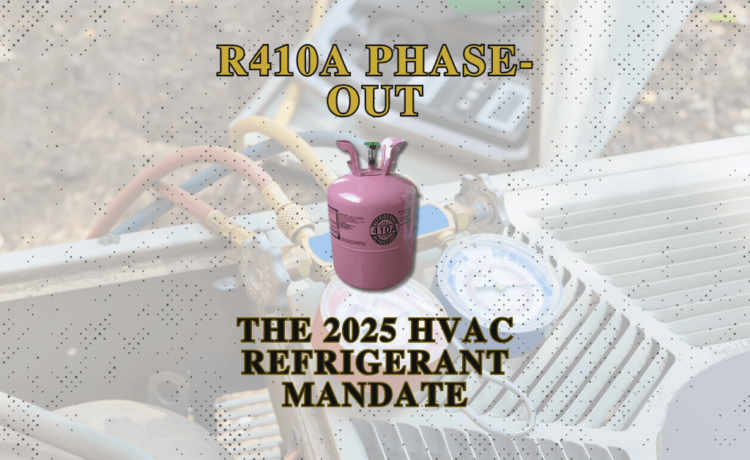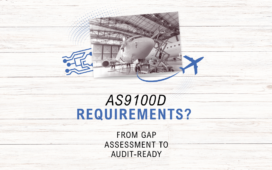The HVAC industry in the United States is at a critical juncture as it faces regulatory challenges in transitioning to natural refrigerants, which offer significant environmental and economic benefits. This article discusses the current barriers and opportunities in adopting natural refrigerants, such as propane (R290), and examines the implications of the R410A phase-out as part of the broader shift toward sustainable refrigerant solutions.
Why Natural Refrigerants Matter
Natural refrigerants, including ammonia, carbon dioxide, and hydrocarbons (like propane and isobutane), present a sustainable alternative to synthetic options. These refrigerants have low global warming potential (GWP), making them ideal for reducing greenhouse gas emissions in heating and cooling applications. However, regulatory restrictions in the U.S. impede their widespread use, placing American manufacturers at a competitive disadvantage compared to their European and Asian counterparts, where hydrocarbon refrigerants are already common.
Economic and Environmental Benefits of Hydrocarbons
As consumers shift to more innovative cooling technologies, the adoption of R290 offers a promising pathway toward both sustainability and cost savings. Its natural composition and low Global Warming Potential (GWP) align well with global regulatory trends aimed at reducing greenhouse gas emissions. By using R290, manufacturers can produce HVAC systems that not only operate with greater efficiency but also have a lower environmental impact, helping to meet new regulatory standards without the recurring costs associated with synthetic refrigerant phase-outs.
R290’s efficiency means that HVAC systems using this refrigerant can deliver the same or even better performance with less energy, translating to lower utility bills for consumers. In the long term, R290 could establish a more stable, cost-effective refrigerant market as it reduces reliance on expensive synthetic alternatives, positioning both manufacturers and end-users to benefit from a resilient, eco-friendly cooling solution that adapts seamlessly to future environmental standards.
The R410A Phase-Out and its Implications
The R410A phase-out is a key element of the American Innovation and Manufacturing (AIM) Act, which mandates a reduction in the production and use of high-GWP refrigerants. Set to take effect on January 1 2025, the R410A phase-out aims to curb greenhouse gas emissions by encouraging the HVAC industry to adopt refrigerants with lower environmental impacts.
R410A, a widely used hydrofluorocarbon (HFC), has a GWP over 2,000 times that of carbon dioxide, contributing significantly to global warming. The phase-out timeline for R410A in the U.S. is part of a broader initiative to meet international climate commitments, such as those outlined in the Kigali Amendment to the Montreal Protocol. By reducing R410A usage, the U.S. aims to accelerate the transition to alternative refrigerants, with a particular emphasis on low-GWP options like R290.
The regulatory approach in the U.S. has so far favored synthetic alternatives, such as HFOs, which come with their own environmental challenges. HFOs produce a byproduct known as trifluoroacetic acid (TFA), which accumulates in groundwater and poses long-term ecological risks. In contrast, natural refrigerants like R290 do not generate harmful byproducts and offer a more stable, environmentally friendly alternative. The R410A phase-out could therefore serve as a catalyst for expanding the use of natural refrigerants if regulatory barriers are addressed.
The HVAC industry’s shift from R410A to R290 could be transformative. R290’s efficiency and low GWP make it an ideal replacement for R410A in various applications, especially in light commercial and residential heat pumps. Moreover, natural refrigerants eliminate the need for frequent phase-outs, reducing costs and complexities associated with transitioning to successive generations of synthetic refrigerants. By supporting R290 as a replacement for R410A, the industry can achieve a stable, long-term solution that aligns with both environmental and economic goals.
Phasedown Schedule for HFC Refrigerants in the U.S. (2022-2037)
The graph below illustrates the phased reduction in HFC refrigerants allowable baseline usage in the United States from 2022 through 2037. The schedule follows a stepwise decline, beginning with a 90% baseline allowance in 2022 and 2023. In 2024, a substantial reduction brings the allowable usage down to 60%, which remains constant until 2029.

This phase allows industries time to adapt to the changes in refrigerant regulations while transitioning to more environmentally friendly alternatives. Starting in 2030, the baseline allowance drops sharply to 30%, marking another significant decrease to drive further reductions in greenhouse gas emissions. The 30% level continues until 2034, after which the allowance steps down again, reaching 20% in 2035 and holding through 2036.
In the final phase of the schedule, 2037 sees the baseline allowance reduced to 15%, representing the ultimate target of the phasedown initiative. This schedule, in line with the U.S. commitments under the AIM Act, aims to limit the environmental impact of high GWP refrigerants and accelerate the transition to low GWP alternatives like natural refrigerants.
Cost Implications of the R410A Phase Out
Transitioning from R410A to alternative refrigerants, particularly natural options like R290, entails both short and long term cost implications for manufacturers, HVAC technicians, and end users. Here’s a breakdown of the cost factors involved:
- Redesign and Re-Certification Costs: HVAC systems and components need to be redesigned and re-certified to accommodate new refrigerants, especially those with flammability characteristics like R290. Meeting safety standards such as UL 60335-2-40 for flammable refrigerants can add substantial costs in terms of research, development, and testing. Each redesign for a new refrigerant also requires recertification, which adds to manufacturers’ financial burdens.
- Training and Equipment for Technicians: Technicians will need specialized training to handle flammable refrigerants, requiring an investment in safety protocols and potentially new equipment. As R290 is flammable, technicians must be trained in handling, leak detection, and safety measures. These requirements translate into increased training costs for companies and higher costs for service providers.
- Supply Chain and Inventory Adjustments: Transitioning to a new refrigerant disrupts existing supply chains, as manufacturers, suppliers, and distributors need to adjust inventory and distribution channels to handle alternative refrigerants. With frequent refrigerant phase downs, there’s a risk of excess inventory of obsolete refrigerants, leading to financial losses for suppliers and added costs for end-users who may face higher prices due to limited availability of newer refrigerants.
- HVAC System Costs for Consumers: As manufacturers incur expenses associated with redesigning, re-certifying, and retooling their production lines, these costs are likely to be passed down to consumers. In the short term, consumers may face higher prices for HVAC systems using newer, compliant refrigerants. However, this cost may be offset in the long term by the energy efficiency and lower operating costs associated with natural refrigerants like R290.
- Ongoing Compliance and Safety Costs: With regulatory requirements around refrigerant safety and environmental compliance, manufacturers may face ongoing compliance costs. Meeting evolving environmental and safety regulations, as well as addressing possible phase down requirements for other synthetic refrigerants, could lead to additional operating costs for HVAC companies and increased maintenance costs for consumers.
- Environmental Costs of Synthetic Refrigerants: Should the industry continue to shift towards synthetic refrigerants like HFOs, there are hidden long-term costs associated with potential environmental impacts, including groundwater contamination and ecosystem disruption from TFA accumulation. If future studies mandate an additional phase down of HFOs due to environmental concerns, the industry would again face the costly cycle of developing and transitioning to a new refrigerant.
The R410A phase out introduces significant initial costs for all stakeholders in the HVAC industry, including manufacturers, technicians, and consumers. However, opting for natural refrigerants like R290 could offer long-term financial stability by eliminating the need for recurring refrigerant phase outs, reducing regulatory burdens, and minimizing environmental liabilities. Transitioning now to a sustainable refrigerant option could help mitigate the financial impact over time and support a resilient, eco-friendly HVAC industry.
Key Regulatory Barriers
- UL 60335-2-40 Standard: This standard currently limits the allowable charge of R290 to 114 grams, which is insufficient for many practical HVAC applications. In contrast, international standards allow significantly higher charge limits, enabling manufacturers in Europe and Asia to produce efficient, R290-based systems. Aligning U.S. standards with the International Electrotechnical Commission (IEC) guidelines would enable the use of larger R290 charges in heat pumps, facilitating broader adoption.
- ASHRAE Standards 15 and 34: These standards restrict the use of flammable A3 refrigerants (like propane) in HVAC applications. Updating these standards to include specific safety guidelines for A3 refrigerants, such as leak detection and ventilation requirements, would allow the industry to leverage R290’s benefits safely.
- EPA Significant New Alternatives Policy (SNAP): The EPA’s SNAP policy, which adopts the strictest guidelines from UL and ASHRAE, further limits hydrocarbon usage. By adopting IEC charge limits within SNAP, the EPA could pave the way for natural refrigerants in the U.S. HVAC market, supporting both environmental and economic resilience.
Pathways to Reform
Federal agencies, particularly the Department of Energy (DOE), could play a pivotal role in reforming these regulatory barriers. Funding research on the safe use of natural refrigerants and supporting updates to UL and ASHRAE standards could accelerate the adoption of R290 and other hydrocarbons. Additionally, federal initiatives such as the Defense Production Act or permitting the use of European certifications could provide immediate relief for manufacturers transitioning away from R410A.
Conclusion: R410A Phase Out
The phasedown of R410A presents an opportunity to shift the HVAC industry toward environmentally sustainable refrigerants. By reforming outdated standards and encouraging the adoption of natural refrigerants like R290, the U.S. can support innovation, reduce greenhouse gas emissions, and strengthen its manufacturing sector. The R410A phase out is more than a regulatory hurdle—it’s a chance to build a resilient, green HVAC market that meets the needs of both consumers and the environment.
Lear more from the EPA.
https://www.epa.gov/ods-phaseout















